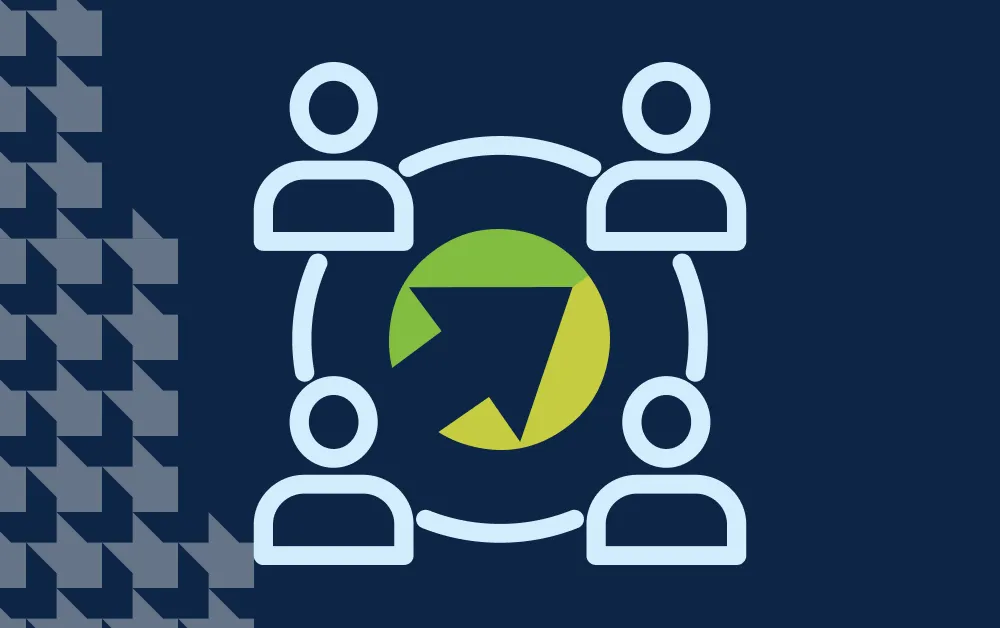About the Episode
Process improvement via automation is changing the way financial institutions across the country are doing business.
Those banks using credit risk management software solutions are discovering a lot of benefits to making this strategic change in how they do business.
Listen in as Baker Hill lending experts cover some of the positives that come with using digital credit risk tools for modern portfolio management, like freeing up their staff to focus on “removing human bias from their work” and “moving the needle forward.”
FAQS About Credit Risk Management Software
What Are Features of a Good Risk Management Solution?
A great credit risk management solution is:
- Highly-secure
- Easy-to-use and flexible
- Scalable and continually improving
- Contextualizes risk
What Functionality Is Essential for a Credit Risk Management Tool?
When evaluating different credit risk banking solutions, look options that use automation to help with portfolio management tasks, such as:
- Risk quantification
- Credit worthiness assessment
- Credit decisioning
- Post-payout monitoring
What Are the Latest Trends in Lending Risk Management?
According to Deloitte, some of the current trends in loan credit risk management include:
- Focusing on cost management as opposed to cost reduction
- Increasing importance of sound data management has never been more important
- Establishing central model factories for essential credit risk functions
- Embracing cloud deployment and managed services
Transcript
Mitch Woods: Welcome back to Baker Hill’s podcast, Lending Made Easy. I’m joined again today by Brian Peckinpaugh and David Catalano.
Today, we’re going to talk about automation and credit risk management software. Even as you look across other industries, process automation is a pretty hot topic right now. Businesses are really automating for similar reasons—cost savings, efficiency, transparency, and scalability.
To kick things off today where do you see financial institutions really getting the most out of automating processes? And, so I guess, David, we’ll start with you today.
David Catalano: Sure. Thanks Mitch.
I guess my answer is going to come from a recency bias. I just got done reading some articles on credit risk management and how the current economy is really bringing some new challenges to banks because they really haven’t had anything like what we’re seeing right now (or I think anything that’s about to come up in quite a while).
There are folks who worked at banks that haven’t really seen a deep recession. They haven’t had to work through systemic credit issues across the board, asset classes, and industries. They’ve been able to grow their loan portfolios to a pretty big size, both in absolute dollars and in individual credits.
As I look at that problem, I’m thinking, do they actually have the staff to monitor all of the loans they have on the books? Then, how do you get on the front end of that? What are the leading indicators of a loan going bad?
I always think about deposits when thinking about a leading indicator for a business. If the deposits are slowing and deposit balances are shrinking or going away altogether, that’s a really strong indication that that underlying business has an issue, the business owner has an issue, or their consumers have an issue.
So, how do you do that at scale? That’s really the question. What is a great topic to focus on as a bank is the automation perspective.
How do you monitor what you have on your balance sheet in an automated way? Brian, what do you think about that topic?
Bryan Peckinpaugh: You the nail in the head, David.
We’re potentially going into uncharted territory. It’s certainly been a long time since we’ve seen broad scale economics be where they are today. But none of us have seen the full potential impact of the pandemic on the economy.
You’re right in that this means you have to think about how you review portfolios when everything is upside down and different. You can’t really rely on past behaviors to help you predict future behaviors because there wasn’t anything like 2020 and 2021 in our history.
But, I think it also applies to forward thinking decisions. It’s good to understand that behavior that you’re talking about in your portfolio.
What does good look like for my institution? Because what good credit looks like inside of my loan portfolio as a regional bank in the Northeast might look wildly different than what good looks like for a credit union in the Southwest—and, to really understanding the behaviors in your portfolio.
You need to have a way to turn that into actionable decision criteria on the front end. You need to make sure you’re applying the appropriate metrics and factors to your decisions to ensure good quality credit going on the books going forward.
It creates an opportunity out there to create a closed loop ecosystem, if you will, for lending decisions. But again, that all starts, as you said, from using credit risk management software for automation because you can’t throw bodies at that process. There are just too many factors to think about and to feed back to the organization.
David Catalano: Yeah, and we see things in the economy now, like the savings rate being negative, credit card applications skyrocketing, and credit balances rising on the consumer side of things.
If you’re a credit union in the Southwest and you’ve got 50,000 car loans on your books, then that’s a challenge, especially if you don’t have the corresponding deposit account. And, if you can monitor deposits with credit risk management software, then that’s a good thing.
Imagine looking at a deposit on a trending basis and then seeing that the deposit is now lower this month than it was last month. And, then seeing that trigger and then you see it again, you get another trigger. Now you’ve got a couple triggers in a row where you see a deteriorating deposit balance.
There’s a corresponding loan for that relationship. That’s someone you want to talk to. Automation can happen at that scale with credit risk management software. You create an item, like a tracking item that you can assign to somebody.
Say you’re a relationship manager or portfolio manager. With credit risk management software, you can check on accounts and quickly screen through your portfolio on a nightly basis. With automation, you can look at all your deposits and loan accounts to determine whom you should talk to tomorrow and whom you should check on later in the week.
Bryan Peckinpaugh: Yeah. I like that you mentioned scale, David, and how automation with credit risk management software takes also a little bit of the human bias out of it as well.
As an RM (or potentially as a portfolio manager), I may have personal ties to these borrowers that may make my glasses a little rosier than, you know, an arbitrary look at the data would indicate—and, not only that, but the ability to apply more complex logic to it, right?
You’re talking about those singular trigger events. If your deposit balance or credit score is decreasing, one could argue you can do that from a reporting perspective. If you set up the right reports to aggregate that, you still have to have the people go and sign in and look at them and let alone take action on them as opposed to the triggers you’re talking about.
But, credit risk loan management is a much more one-to-one relationship at that point, as opposed to looking at compounding factors. It may not be relevant to how I think about portfolio performance and how these credit balances increase. However, that combined with a significant decrease in deposits may tell me something completely different. And, those become a lot harder to report on, right?
Now imagine you’re again trying to slice and dice through probably some relatively significant SQL scripting or something to get to the types of data that you want as opposed to the automation factor, right? Having a system that can handle those cascading rules and then only tell you when we trip all of them, or the right combination of factors to put something right on my desk that says, “This happened. Go do something with it.”
This would take some of the human factors out of the credit risk management decision process, right? I may, as a human, look at my portfolio and say, “Eh, you know, I like Steve. I think he’s going to be fine, even though the data tells me, maybe we need to have a little bit deeper conversation with Steve and see what’s going on in his business world.”
That again, just much easier to do with technology than it is to rely on people looking at the data and interpreting the data the way you want them to.
David Catalano: Right. Takes the human bias out of it. It also tells you who you don’t need to talk to.
Bryan Peckinpaugh: Correct! Yeah. You can certainly look at things like, automation of renewals.
We did a great webinar with some clients recently to talk a lot about those types of ideas. How can you leverage positive behaviors or maybe better said, the lack of negative behaviors to, to automate annual reviews if nothing has triggered. If I’m looking at a lot of different factors and a lot of potentially compounding factors and nothing is triggering, why look at it?
Those clients were saying their regulators have accepted it because they’re able to point to exactly what their process looks like. What are those factors that they’re considering and building in? And, because it’s open and not a black box, the regulators are able to get comfortable with it and sign off on using credit risk management software to automate, which frees people up to do more value-added work. It gives them more potential joy in the day because they’re not spending unnecessary time pouring over reports and diving into details to try to understand questions, like, “Is this tire shop going to be successful next year?”
If you can point to all of the automation that your bank has and say, based on everything we’re seeing, there’s no way they aren’t going to be successful. Then you can focus more on the people that need the help. And that’s where a lot of the people in these roles derive satisfaction from their job: helping the people that need help, finding ways to restructure and modify loans for those that might go bad in the future, or, putting new products in front of them that might serve them better.
So, if you’ve got a portfolio of a thousand loans and credit risk management software that can take some percentage of those off the table that means you can spend more individual attention on the ones that really truly need it, as opposed to the ones that were going to renew anyway, because they have solid, healthy credit.
Mitch Woods: You know, Brian, I really like what you said there.
Automating processes, especially using credit risk management software, isn’t about removing humans from the equation. It’s about surfacing the data and helping you make those decisions that are data-driven instead of off with bias.
I like the fact that you tie that back to value-added work. That’s something that every employee wants to have, right? They want to contribute to their organization in a positive way, and I think that that really can be the unsung hero of process automation in a lot of ways.
There’s a morale boost that comes along with using credit risk management software so you don’t have to do tedious tasks.I It is great when you are able to make decisions that help you feel like you’re moving the needle for your organization as well.
That being said, how do you see that really having a positive impact whenever you are automating credit risk processes? Where do you see that headed in providing a positive impact across the financial institution?
Bryan Peckinpaugh: I would say there’s probably two factors to focus on.
One, there's automation for automation’s sake, right? I mean, there is cost savings to be had by automating the processes. And, to your point, Mitch, it’s less about staff reduction and more about doing more with the same team.
As David said, we’ve been looking to grow loan portfolios across the industry. Every bank out there is looking for ways to grow and bring on more loan volume. And, you know that comes with additional processing that’s necessary.
There are two ways to solve that—automate it or hire more people. And, if you can put the solutions in place to automate, you’ll have better economics in the long run than those banks who just hire bodies to solve the same problem.
The second factor is where do people put their focus on a day to day basis? Everybody wants to try to help, right? We want to do fun deals. We want to go win that piece of business that maybe our organization hasn’t competed for in the past, right? I go out and get a commercial loan that normally would go to the competitor down the street, or I help us get into a new market segment as part of my commercial lending out in the markets we serve.
That’s always fun, right?
You want to be able to focus on those and drive that new business. Just like from the portfolio management perspective, I want to find those borrowers that I can help. I want to spend my time making a difference to the portion of the business that I serve. I don’t want to spend my time on administrative tasks. I don’t want to spend my time reviewing reports.
If I’m a portfolio manager and writing up a use or a business case for why we should renew this loan for another year I would much rather take that thousand, say, here’s the 200 we’re going to extend, here’s the bottom 200 that we need to call the loan on, or whatever your loss mitigation processes might be, and here’s the middle of the bell curve where I’m going to spend my time and make a difference, right?
I’m going to find a way to renew a piece of business that makes sense to renew that the numbers maybe don’t indicate. Or, I’m going to find time to restructure an agreement with a borrower to maximize their business.
And similarly, on the front end, I don’t want to spend my time doing the mundane aspects of commercial lending. I want to focus on selling the deal and winning the business, not underwriting it, not doing the down and dirty admin work that comes along with the process if there’s a way to do that with credit risk management software and still, put out good credit at the end of the day.
Mitch Woods: David, any final thoughts from you on that?
David Catalano: I think it’s always more fun to be proactive than reactive.
Traditional credit management—without credit risk management software—is typically reactive because things have already occurred versus being proactive and looking for behavior changes in say deposits, which then could lead to a conversation around the loan and what’s going on with the business and whether or not that business is healthy (and if it’s just a matter of structuring something differently to help that business along).
Being proactive is being helpful. It’s like what Brian said: It’s just more fun to do that sort of work. It keeps you out of the icky stuff and focused on the good stuff. That’s probably my last thought.
Mitch Woods: Well, awesome. David, Brian, thank you guys so much for your thoughts on this today.
Automation and credit risk management software was a great topic to discuss.
Thanks, too, to you and everybody else for listening to this episode of Lending Made Easy.










